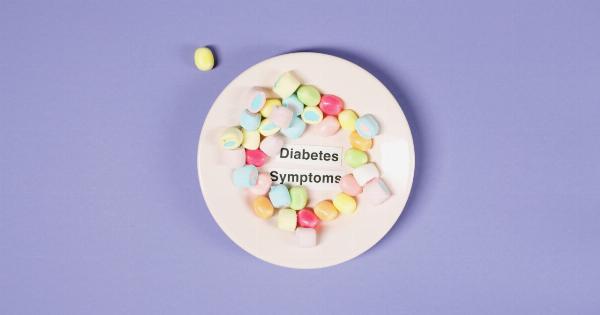Fatty liver, also known as hepatic steatosis, is a condition characterized by the accumulation of excess fat in the liver. It is a common condition, affecting millions of people worldwide.
The liver is responsible for various essential functions in the body, such as detoxification, metabolism, and production of bile. However, when excess fat builds up in the liver cells, it can impair its functionality and lead to serious health problems.
Understanding Type 2 Diabetes
Type 2 diabetes, on the other hand, is a metabolic disorder characterized by high blood sugar levels. It occurs when the body becomes resistant to insulin or fails to produce enough insulin.
Insulin is a hormone that helps regulate blood sugar levels by allowing glucose to enter the cells to be used as energy. When there is insulin resistance or deficiency, glucose accumulates in the blood, leading to diabetes.
The Link between Fatty Liver and Type 2 Diabetes
Emerging research suggests a strong link between fatty liver and type 2 diabetes. Studies have shown that individuals with fatty liver are at a higher risk of developing diabetes, and those with diabetes are more likely to have fatty liver.
Insulin Resistance and Fatty Liver
Insulin resistance plays a crucial role in the development of both fatty liver and type 2 diabetes. When cells become resistant to the effects of insulin, glucose remains in the bloodstream, leading to high blood sugar levels.
The pancreas then releases more insulin in an attempt to compensate for the resistance. However, excess insulin can stimulate the liver to produce more fat, leading to fatty liver.
Inflammation and Oxidative Stress
Fatty liver is also associated with inflammation and oxidative stress. The excess fat in the liver triggers an inflammatory response, leading to the release of pro-inflammatory molecules.
Chronic inflammation can further worsen insulin resistance and increase the risk of developing diabetes. Additionally, oxidative stress, which occurs when there is an imbalance between free radicals and antioxidants, can damage liver cells and impair insulin signaling.
Adipose Tissue and Hormonal Imbalance
Both fatty liver and type 2 diabetes are closely linked to hormonal imbalances. Adipose tissue, or fat cells, produce various hormones and molecules involved in metabolism and energy regulation.
Excess fat accumulation in adipose tissue can disrupt the normal secretion of these hormones, leading to insulin resistance and altered glucose metabolism. Hormonal imbalances, particularly involving adiponectin and leptin, have been implicated in the development of fatty liver and diabetes.
Shared Risk Factors
Fatty liver and type 2 diabetes share several risk factors, making the link between them even stronger. Obesity, particularly abdominal obesity, is a major risk factor for both conditions.
Excess weight increases the likelihood of fat accumulation in the liver and insulin resistance. Sedentary lifestyle, poor diet, and excessive alcohol consumption are also common risk factors for fatty liver and type 2 diabetes.
Effects of Fatty Liver on Diabetes Management
Having fatty liver can complicate the management of type 2 diabetes. The presence of fatty liver can worsen insulin resistance and glucose intolerance, making it harder to control blood sugar levels.
Individuals with both conditions may require higher doses of medications or different treatment approaches to effectively manage their diabetes.
Prevention and Management Strategies
Fortunately, there are several preventive measures and management strategies that can help reduce the risk and impact of fatty liver and type 2 diabetes:.
- Maintaining a healthy weight through a balanced diet and regular physical activity.
- Avoiding or limiting alcohol consumption.
- Managing blood glucose levels through medication, lifestyle modifications, and regular monitoring.
- Quitting smoking, as smoking can worsen liver and metabolic health.
- Managing cholesterol and blood pressure levels to reduce the risk of cardiovascular complications.
- Considering medical interventions such as liver detoxification programs or bariatric surgery in severe cases.
The Importance of Early Detection
Early detection of fatty liver and type 2 diabetes is crucial for effective management and prevention of complications.
Regular check-ups, blood tests, and liver function tests can help identify these conditions early on, allowing for early intervention and lifestyle modifications.
Conclusion
The link between fatty liver and type 2 diabetes is evident, with both conditions sharing common risk factors and underlying mechanisms.
Proper management and prevention strategies can significantly reduce the impact of these conditions on overall health. By maintaining a healthy lifestyle and seeking medical advice when needed, individuals can reduce their risk of developing fatty liver and type 2 diabetes, and lead healthier lives.





























